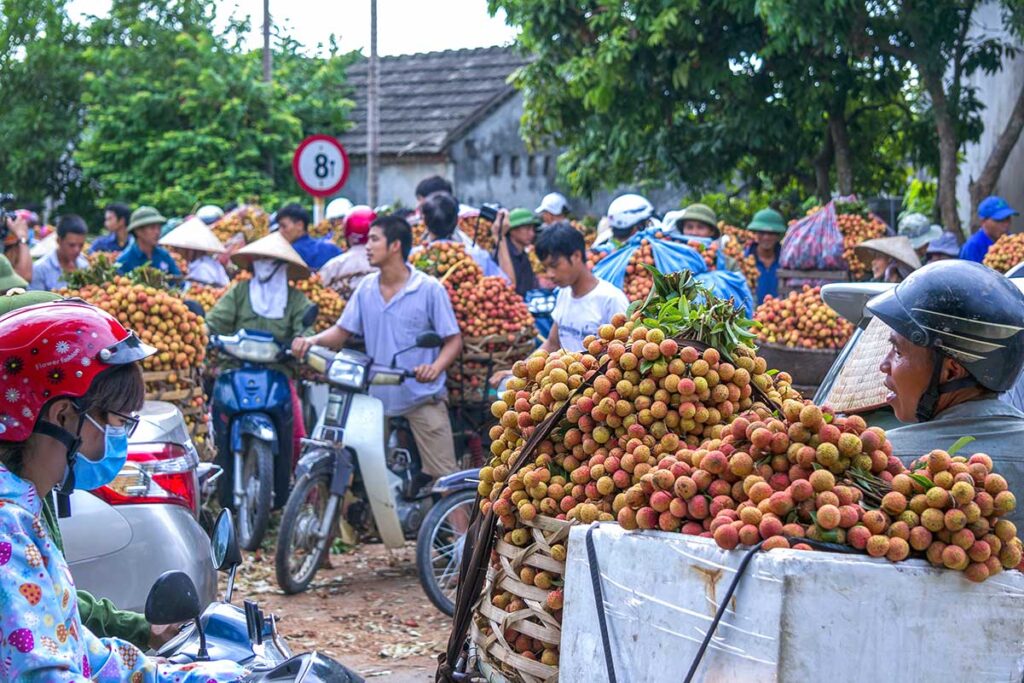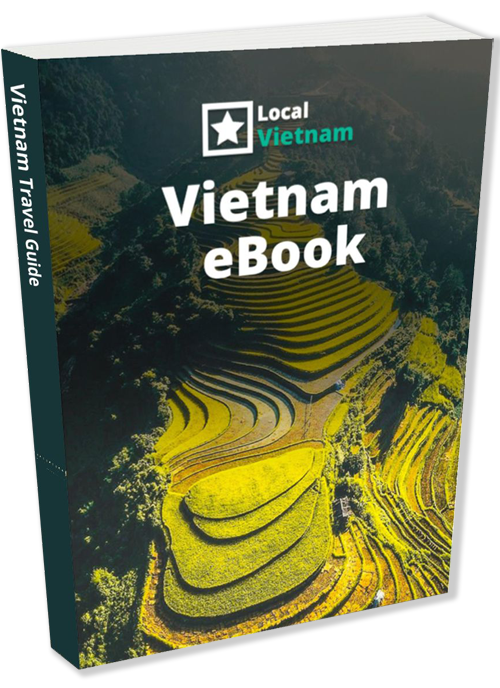About Hai Duong
Hai Duong, a province in northern Vietnam, is part of the Red River Delta and located between Hanoi and Ha Long Bay. Its capital city, also named Hai Duong, serves as a central hub for the province. Known for its agricultural products, Hai Duong is especially famous for its lychees and sweet mung bean cakes (bánh đậu xanh), a specialty enjoyed across Vietnam.
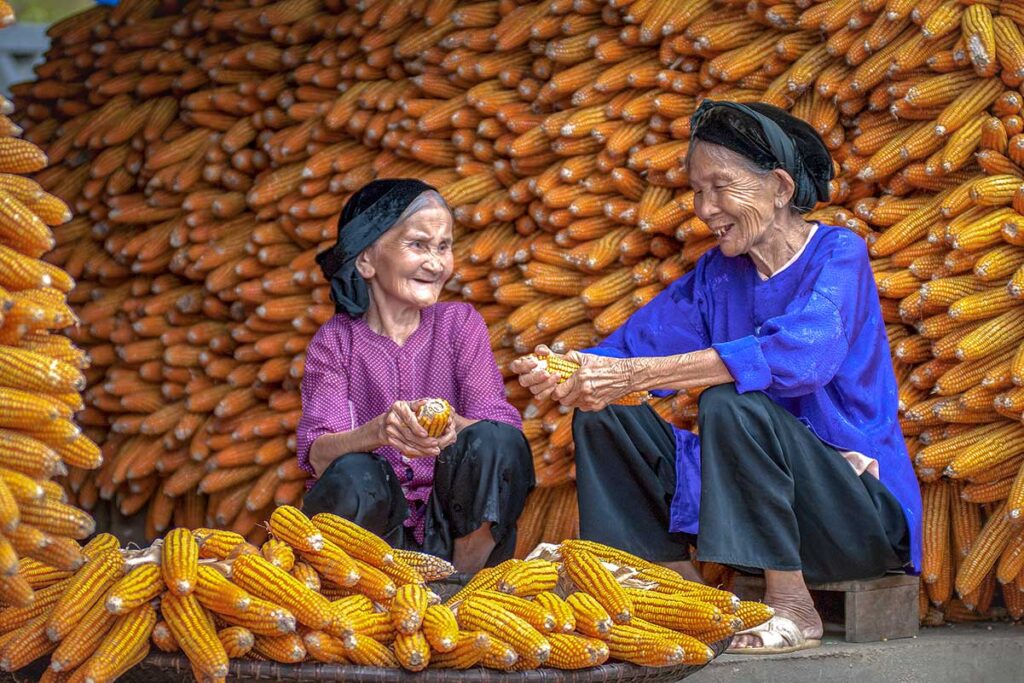
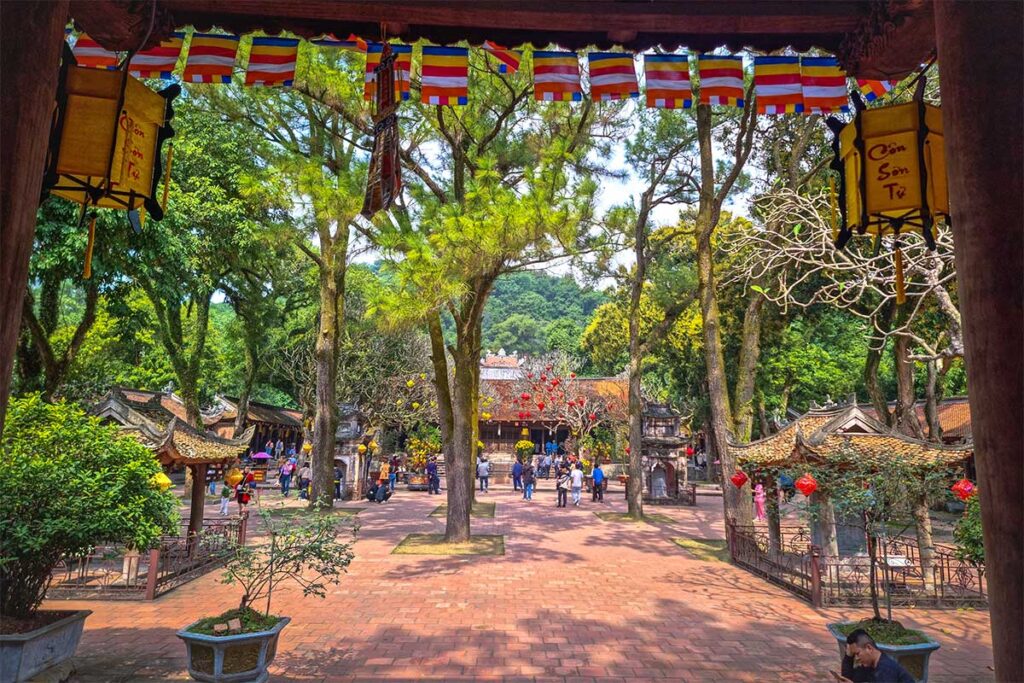
Historically, Hai Duong was once a significant cultural and political center during Vietnam’s imperial era. Today, it remains largely untouristed, offering visitors a glimpse of rural life and local traditions. While it may not feature prominently on most itineraries, those looking for an off-the-beaten-path experience or a break from bustling cities might find its charm in its peaceful villages, temples, and scenic countryside. In this guide, discover the most notable things to do in Hai Duong and decide if this destination fits into your journey.
Is Hai Duong worth to visit?
For most travelers, Hai Duong is not a must-visit destination, especially given the wealth of stunning landscapes, cultural sites, and historical landmarks in northern Vietnam. If your time in the country is limited, other destinations such as Hanoi, Ha Long Bay, Sapa or Ninh Binh would be a better use of your itinerary. However, Hai Duong could be worth a stop for those seeking an off-the-beaten-path experience or wishing to explore the rural countryside by bike or motorbike. Additionally, if you’re traveling between Hanoi and Ha Long Bay and have a lot of time left on that day, Hai Duong might offer a unique cultural break with stops at local villages or traditional craft workshops.
Best time to visit Hai Duong
Hai Duong is located in northern Vietnam, sharing a similar weather pattern with Hanoi. The best time to visit Hai Duong is during the dry season, which runs from November to April. These months provide cooler and more comfortable weather, making it ideal for outdoor activities like cycling or exploring local sights.
The rainy season from May to October brings high humidity and frequent showers, which might limit outdoor plans. However, the lush greenery during this time can make the countryside especially scenic. Winter months, particularly from December to February, can get chilly, so packing layers is recommended if visiting during this period.
How to travel to Hai Duong
Hai Duong City serves as the main travel hub for Hai Duong province, located approximately 1.5 hours from Hanoi city center. Before the construction of the Express Highway, it was a common stop on the way to Ha Long Bay, but this is no longer the case. While Hai Duong doesn’t have its own airport, it is conveniently located between Noi Bai International Airport in Hanoi, offering the most flight options, and Cat Bi International Airport in Hai Phong, which serves a good selection of domestic routes.
Bus options
For travelers coming from further north or south, it is often best to first travel to Hanoi. Direct connections to Hai Duong from other parts of the country are limited.
From Hanoi, the bus is one of the easiest ways to reach Hai Duong. Limousine vans are particularly convenient for this short journey, offering comfortable seats in shared vehicles that accommodate 9 to 11 passengers. These vans typically cost around $6 USD and complete the trip to Hai Duong City in under 1.5 hours.
Private car with driver
Hiring a private car provides the most flexibility and is especially useful for those who plan to explore multiple sights in Hai Duong. A private car can be arranged not only as transportation to Hai Duong but also for getting around the province’s attractions. This option is ideal for travelers who want to make stops along the way, such as visiting Hai Duong while en route from Hanoi to a Ha Long Bay cruise. Private car services provide fixed pricing for your itinerary, offering a hassle-free travel experience.
Train connections
The train is not the most practical option for reaching Hai Duong. The province is connected to a separate track running between Hanoi and Hai Phong, bypassing the main Reunification Express route that links north and south Vietnam. This means that to reach Hai Duong by train from other cities, you would need to transfer in Hanoi. While the train can offer a scenic ride, it is slower and less convenient compared to limousine vans or private cars.
Driving motorbike
For adventurous travelers, driving a motorbike to Hai Duong can be an exciting way to explore the Red River Delta. The rural landscapes and quiet villages along the way offer a glimpse into authentic Vietnam. However, motorbiking in Vietnam is best suited for experienced riders due to the challenging traffic and road conditions. If you plan to explore Hai Duong’s countryside or travel between Hanoi and Ha Long Bay, this option provides flexibility and adventure.
Things to do in Hai Duong
Start with an introduction and include things to do in Hai Duong
For this list, make sure to write like a travel guide, meaning explain what something is very clear without overselling it and cheesy floating texts about feelings you might have, share interesting travel related information for an internation audience, people from abroad traveling to Vietnam, that helps people decide if it is worth visiting and without knowledge about the places.
We start with the first 2. If I am happy with travel guide writing style, I give you the next.
1. Con Son – Kiep Bac Complex
The Con Son – Kiep Bac Complex is one of Hai Duong’s most culturally significant sites. It is a historical and spiritual destination that pays homage to key figures in Vietnamese history and literature. The complex is divided into two main areas:
Con Son Pagoda
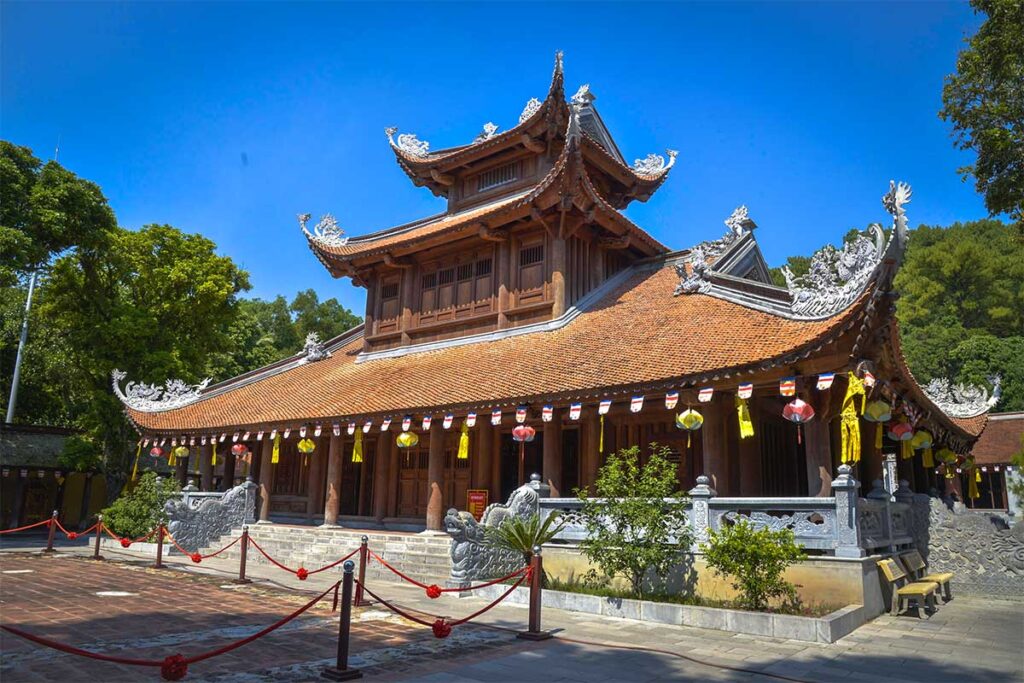
This ancient pagoda, nestled at the foot of Con Son Mountain, dates back to the 13th century during the Tran Dynasty. It is an important Buddhist site and a place of worship for Tran Nguyen Dan, a revered scholar and official. The pagoda is surrounded by picturesque landscapes, including green pine forests and a tranquil stream, making it a serene place to visit. Highlights include the towering Buddha statue, the well-preserved pagoda architecture, and scenic hiking trails around the mountain.
Kiep Bac Temple
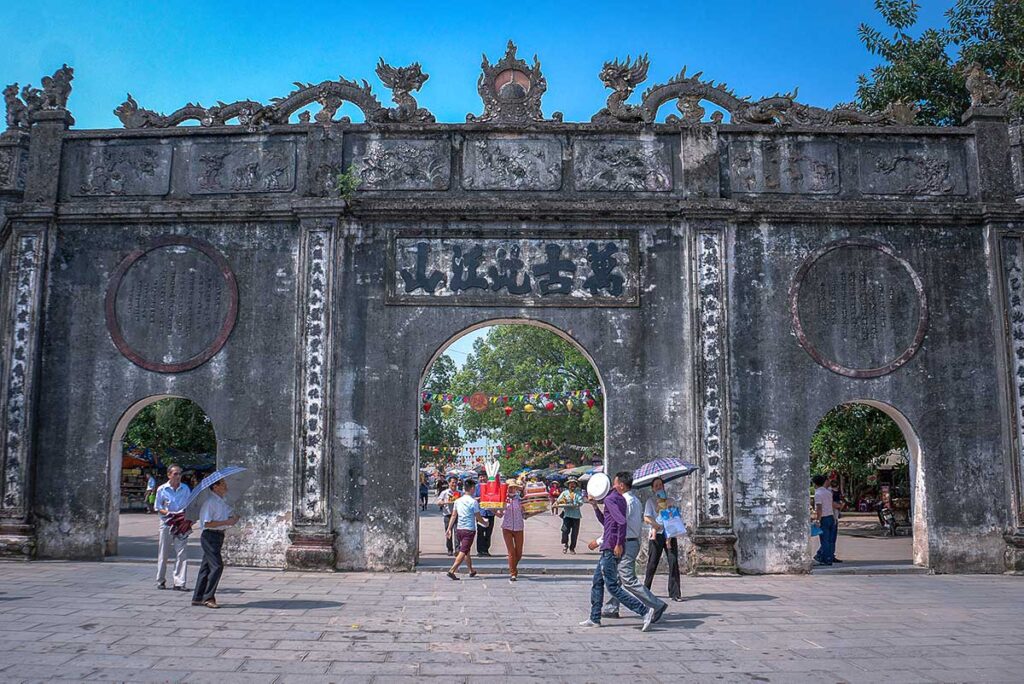
Located along the Luc Dau River, this temple is dedicated to Tran Hung Dao, a national hero who led Vietnam to victory against Mongol invasions in the 13th century. The temple is a place of great historical importance and attracts many pilgrims during the annual Kiep Bac Festival in autumn. The temple complex includes stone steles, ancient statues, and beautifully landscaped gardens.
Spring Festival
The Con Son Festival, held in spring (February or early March), is a vibrant celebration featuring traditional music, processions, and rituals. If you’re visiting during this time, it’s an opportunity to experience authentic Vietnamese cultural festivities.
Travel Tip: The complex is about 70 km from Hanoi, making it accessible for a day trip. Comfortable walking shoes are recommended, as some paths require light hiking.
2. Stork Island Chi Lang Nam

Stork Island, located in Chi Lang Nam Commune, is a natural haven and a fantastic spot for bird enthusiasts. The island sits in the middle of An Duong Lake and is home to thousands of storks and other bird species, particularly during migration seasons.
The island is surrounded by serene waters and lush greenery, creating a peaceful environment. Visitors can explore by boat, gliding through the lake to observe storks nesting in trees or taking off in flocks. Local guides often share insights about the bird species and the ecological significance of the area.
Best time to visit:
The ideal time to visit is in the late afternoon when the storks return to their nests, creating a spectacular sight. Birdwatchers will particularly enjoy visiting from September to April, during peak migration.
Travel tip: Stork Island is about 25 km from Hai Duong City. Arrange for a motorbike or private car to get there, as public transport is limited. Boats to the island are affordable and can be hired on-site.
3. Quan Tuan Tranh Temple
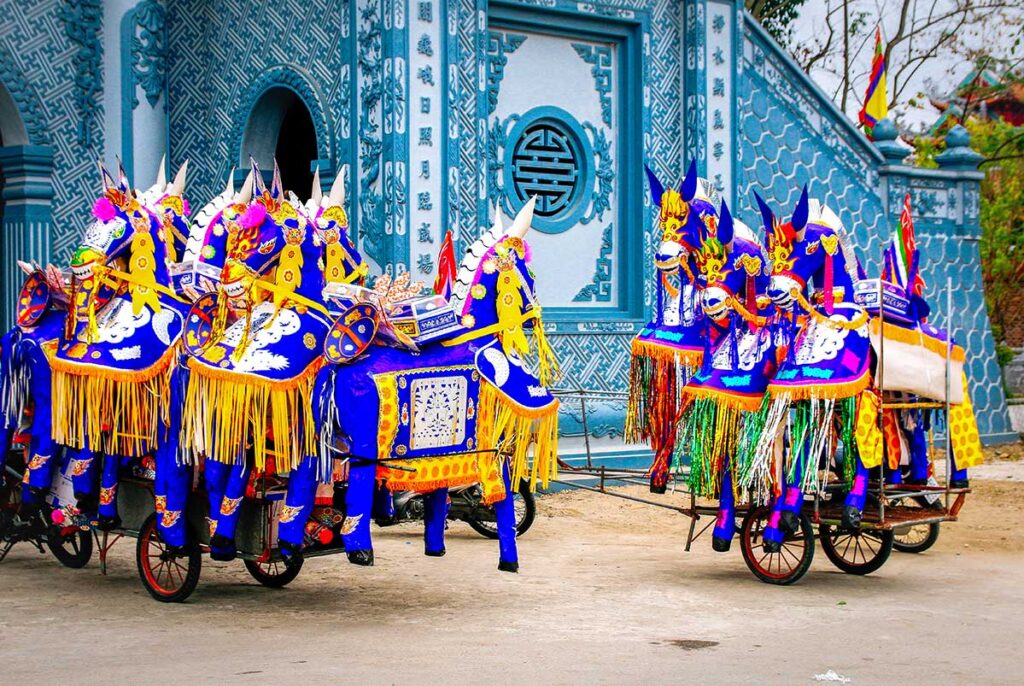
Quan Tuan Tranh Temple, located along the banks of the Luoc River, is a historical and cultural site dedicated to Quan Tuan Tranh, a local deity believed to protect sailors and the surrounding communities. The temple is a blend of traditional Vietnamese architecture, with wooden structures, intricate carvings, and colorful decorations. It is especially lively during festivals, where locals gather for rituals and performances.
4. Water Puppet Village
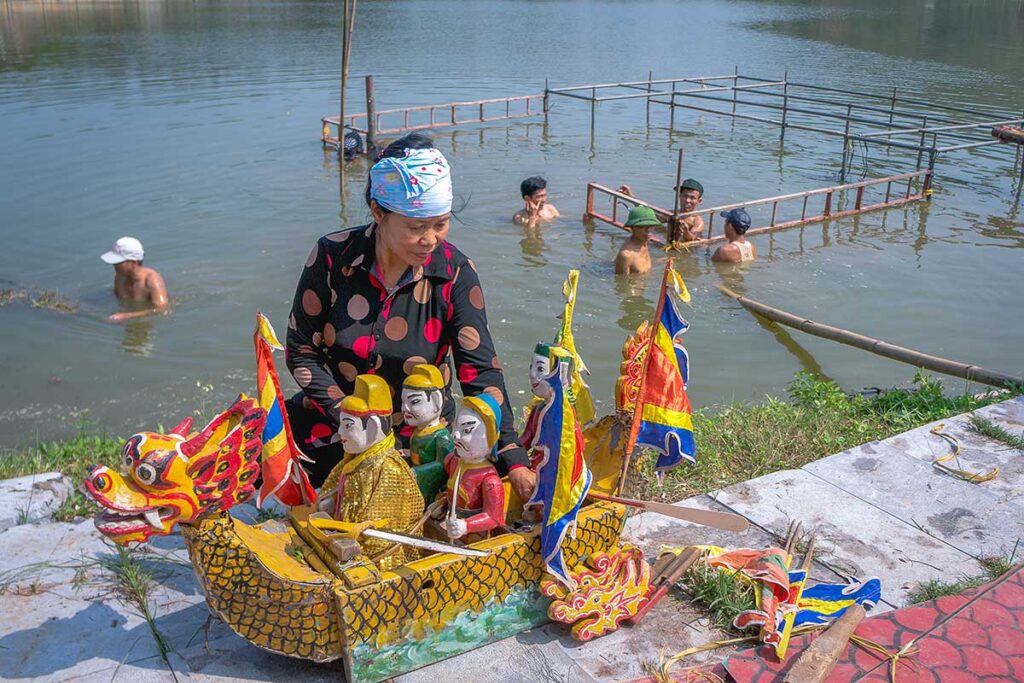
The Water Puppet Village in Thanh Hai Commune is a must-visit for those curious about Vietnam’s traditional performing arts. This area is known for preserving the age-old craft of water puppetry, which originated in the Red River Delta. Visitors can watch live water puppet shows, where wooden puppets dance on a water stage, reenacting folk tales and rural life scenes.

Workshops are also available for visitors to see how the puppets are carved, painted, and manipulated. This experience provides a unique glimpse into an art form that is both entertaining and culturally significant.
Travel tip: Performances may need to be booked in advance if you’re visiting during non-peak times. Check for show schedules or inquire locally to ensure availability.
5. Chu Dau Ceramic Village
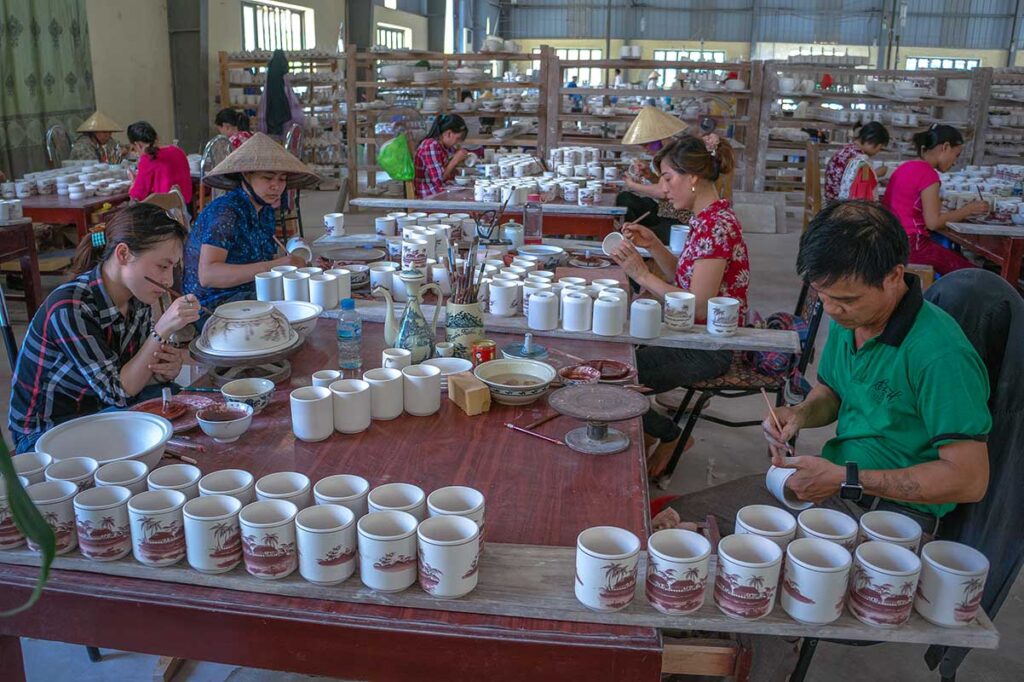
Chu Dau Ceramic Village is a celebrated craft village in Hai Duong, known for its centuries-old tradition of ceramic production. The ceramics here are famous for their intricate patterns, delicate shapes, and vibrant glazes. Visitors can explore workshops where artisans demonstrate traditional pottery-making techniques, from shaping to hand-painting.
The village also features a small museum showcasing antique ceramic pieces that reflect the historical and cultural significance of Chu Dau ceramics in Vietnam and beyond. Many pieces have been found in shipwrecks and international trade routes, highlighting their historic value.
6. Mao Dien Temple of Literature
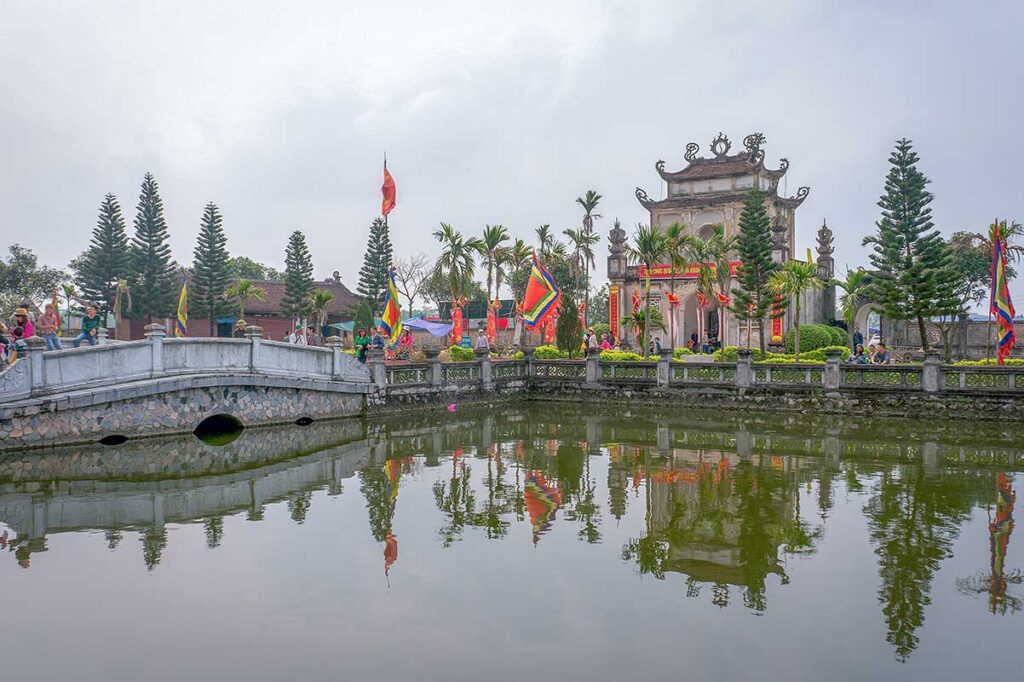
The Mao Dien Temple of Literature is a historic site and one of the oldest Confucian temples in northern Vietnam. It served as an important educational and cultural center during the feudal era, where scholars came to study Confucian principles. The complex includes a beautiful courtyard, ancient stone steles, and halls dedicated to Confucian sages.
7. Tu Ky Rice Fields
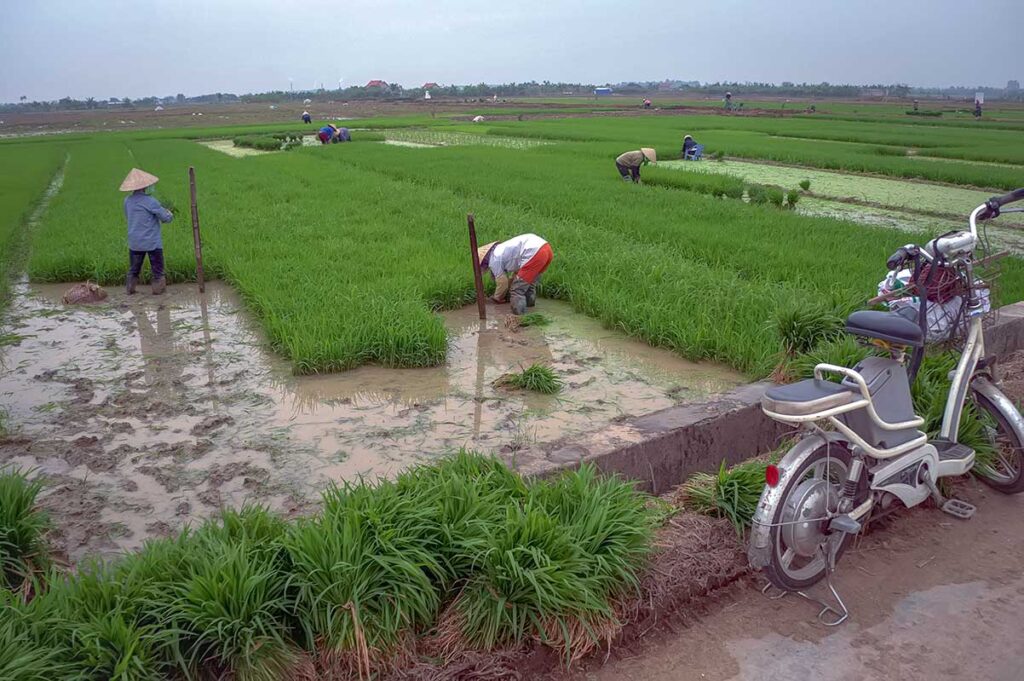
Tu Ky Rice Fields offer a serene escape into the rural heart of Hai Duong. The fields stretch endlessly, especially during the harvest season when they turn into a vibrant golden sea. Visitors can walk along small village paths, interact with local farmers, and enjoy the simple beauty of the countryside.
8. Thanh Ha’s lychee plantations
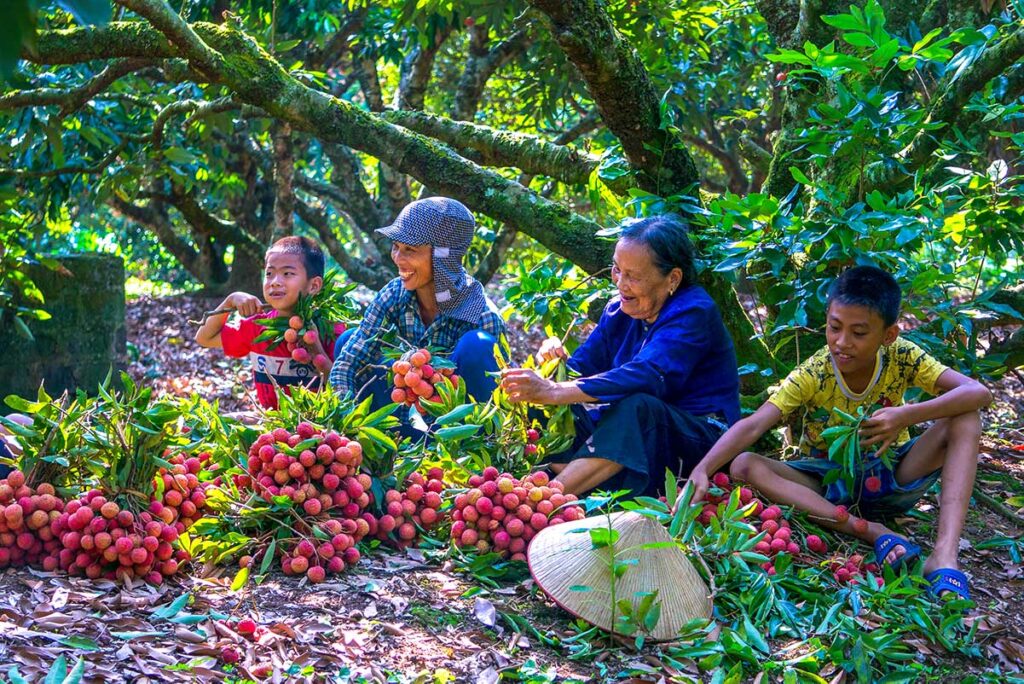
Thanh Ha is famous for its lychee plantations, producing some of the finest lychees in Vietnam. During the harvest season (typically May to June), the area buzzes with activity as farmers gather ripe, juicy fruits. Visitors can tour the plantations, learn about the cultivation process, and even taste freshly picked lychees.
Where to stay in Hai Duong
For most travelers, Hai Duong is best visited as a day trip from Hanoi or nearby provinces, as it lacks the variety and quality of accommodations found in more popular destinations.
If you decide to stay in Hai Duong:
- Hai Duong City: The provincial capital offers some local hotels, but these are mostly catered to business travelers and are quite basic. The city itself doesn’t have much in terms of atmosphere or major attractions, so staying here is only recommended if you have a practical reason to do so.
- Rural Areas: For a more authentic experience, consider staying in rural areas where you can find homestays or guesthouses run by local families. While accommodations in these areas are often basic, they provide a unique opportunity to experience local life and enjoy the quiet countryside.
